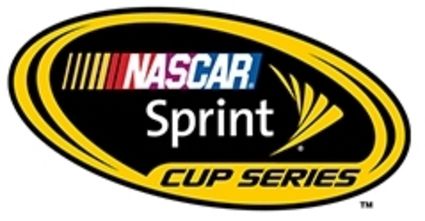NASCAR Reveals New Championship Format
February 13, 2014

NASCAR has announced a new championship format that will put greater emphasis on winning races all season long, expands the current Chase for the NASCAR Sprint Cup field to 16 drivers, and implements a new round-by-round advancement format that ultimately will reward a battle-tested, worthy champion.
"We have arrived at a format that makes every race matter even more, diminishes points racing, puts a premium on winning races and concludes with a best-of-the-best, first-to-the-finish line showdown race – all of which is exactly what fans want," said Brian France, NASCAR chairman and CEO.
"We have looked at a number of concepts for the last three years through fan research, models and simulations, and also maintained extensive dialogue with our drivers, teams and partners. The new Chase for the NASCAR Sprint Cup will be thrilling, easy to understand and help drive our sport's competition to a whole new level."
Changes announced by France to the championship format include:
- A victory in the first 26 races likely will guarantee a driver a berth in the 10-race Chase for the NASCAR Sprint Cup -- a change that will put an unprecedented premium on winning a NASCAR Sprint Cup Series race all season long
- Expanding the Chase field from 12 to 16 drivers, with those drivers advancing to what now will be known as the NASCAR Sprint Cup Series Chase Grid
- The number of championship drivers in contention for the NASCAR Sprint Cup championship will decrease after every three Chase races, from 16 to start in the Chase Grid; 12 after Chase race No. 3; eight after Chase race No. 6; and four after Chase race No. 9
- The first three races of the Chase (27-29) will be known as the Challenger Round; races 30-32 will be known as the Contender Round; races 33-35 will be the Eliminator Round and race No. 36 will be the NASCAR Sprint Cup Championship
- A win by a championship-eligible driver in any Chase race automatically clinches the winning driver a spot in the next Chase round
- Four drivers will enter the NASCAR Sprint Cup Championship with a chance for the Cup, with the highest finisher among those four capturing the prestigious NASCAR Sprint Cup Series title.
Eligibility for the Chase for the NASCAR Sprint Cup
The top 15 drivers with the most wins over the first 26 races will earn a spot in the Chase Grid -- provided they have finished in the top 30 in points and attempted to qualify for every race (except in rare instances). The 16th Chase position will go to the points leader after race No. 26, if he/she does not have victory. In the event that there are 16 or more different winners over 26 races, the only winless driver who can earn a Chase Grid spot would be the points leader after 26 races.
If there are fewer than 16 different winners in the first 26 races, the remaining Chase Grid positions will go to those winless drivers highest in points. If there are 16 or more different winners in the first 26 races, the ties will first be broken by number of wins, followed by NASCAR Sprint Cup Series driver points.
As was implemented in 2011, prior to the start of the Chase, all Chase Grid drivers will have their points adjusted to 2,000, with three additional bonus points added to their total for each win in the first 26 races.
Advancement Model during Chase for the NASCAR Sprint Cup
After the third Chase race, the Chase Grid will be left with 12 drivers. After the sixth Chase race, the field will drop to eight drivers, and following the ninth Chase race, only four drivers will remain in championship contention for the NASCAR Sprint Cup championship.
The first round (races 27-29) will be called the "Challenger Round." If a driver in the Chase Grid wins a Challenger Round race, the driver automatically advances and his/her points will be reset to 3,000. Only the top 12 in points after the Challenger Round remain in championship contention, and all will then have their points reset to 3,000.
The second round (races 30-32) will be called the "Contender Round." Likewise, if a driver in the top 12 in points wins a race in the Contender Round, the driver automatically advances and his/her points will reset to 4,000. Only the top eight in points after the Contender Round remain in championship contention, and all then will have their points reset to 4,000.
The third round (races 33-35) will be called the "Eliminator Round." If a driver in the top eight in points wins a race in the Eliminator Round, the driver automatically advances and his/her points will reset to 5,000. The top four in points after the Eliminator Round remain in championship contention, and all then will have their points reset to 5,000.
Additionally, as drivers are eliminated from the Rounds, their points total will be readjusted to the normal points format in sync with all other drivers in the field no longer in contention for the championship. This will allow all drivers not in contention for the NASCAR Sprint Cup championship to continue to race for the best possible season-long standing, with fifth place ultimately still up for grabs at the season finale.
Four-Driver, First-to-the-Finish Championship Finale
The 36th and final race of the season will be the "NASCAR Sprint Cup Championship." Simply stated, the highest finisher in the Championship race among the remaining four eligible drivers will win the NASCAR Sprint Cup Series title.
Bonus points for laps led or previous race wins will not apply in the season finale, so the official finishing position alone will decide the champion.
Note: All rules outlined above also apply to the NASCAR Sprint Cup Series owner championship structure.
For more details on the new championship format, please visit NASCARMedia.com for a Fact Sheet / FAQs or visit NASCAR.com.

















Reader Comments(0)